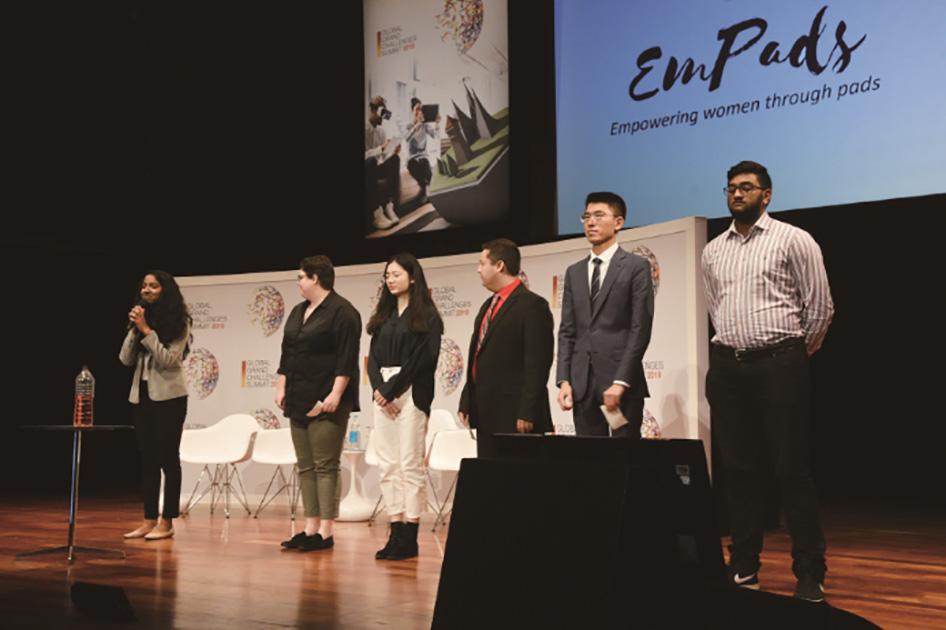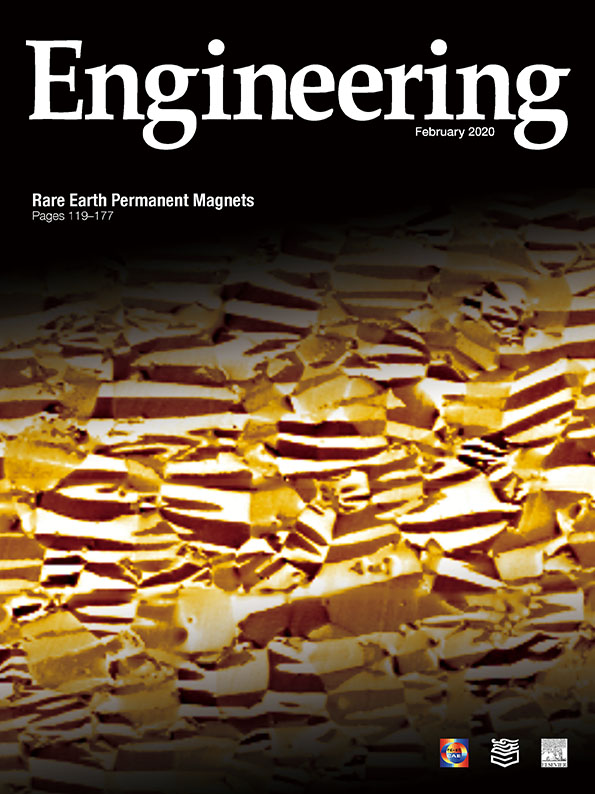The 2019 Global Grand Challenges Summit (GGCS 2019) brought together inspirational innovators and leaders with the next generation of young engineers, to establish international collaborations to help solve the pressing challenges facing humanity. The conference ran from 16 to 18 September and was based at the Southbank Centre on the River Thames in London.
The series of biennial meetings is run as a close trilateral partnership between the United Kingdom’s Royal Academy of Engineering, the Chinese Academy of Engineering, and the US National Academy of Engineering (NAE). The events were originally designed to address and champion the 14 Grand Challenges for Engineering, which were identified in 2008 as fundamental to global progress by leading engineers convened by the NAE [1]. The inaugural Summit took place in London in 2013, followed by one in Beijing in 2015, and another in Washington, DC in 2017.
GGCS 2019 was the first Summit in a new cycle. Its overarching theme was “engineering in an unpredictable world” [2], chosen to reflect unprecedented global changes, from accelerating population growth and its associated degradation of the planet’s biodiversity and resilience, to the disruptive effects of rapid technological advances on everything from work and communications to energy generation (Fig. 1).
《Fig. 1》

Fig. 1. Professor Lord Martin Rees, the United Kingdom’s Astronomer Royal, gave a keynote speech on the precarious, pivotal nature of this century, highlighting the threats and opportunities presented by new technology, and calling for a rational and ethical approach to progress. Professor Lord Rees’s commentary based on his address to the Summit can be read in this issue. Credit: Rob Lacey, with permission.
The sub-theme of the first day of the Summit was “Will AI and other transformational technologies change humanity for the better?” That day’s presentations and discussions explored areas including artificial intelligence, automation, genetics, mental health, and unexpected consequences. Day two focused on the question “Can we sustain 10 billion people?” and looked at topics including food production, energy, waste, the circular economy, climate change, China’s mega-cities, and economic development. Each of these two days will be reported in upcoming issues of Engineering.
“We decided to theme the Summit in this high-level way so that we could capture not only the 14 Grand Challenges, which have been very successful, but also encompass the United Nation’s sustainable development goals [3], which emerged later but overlap with the Grand Challenges, and which engineers are increasingly engaging with,” said Dr. John Lazar CBE, chair of the GGCS 2019 Steering Committee, and chairman of Enza Capital, a business based in Nairobi, Kenya, that invests in early-stage African technology companies.
“These summits offer a tremendous opportunity for knowledge sharing and the cross-pollination of ideas, which is absolutely critical in solving the grand challenges,” said Caroline Fricke Mantoura, educated as a mechanical engineer and now a director in Global Strategy and Sustainability Practice at the global professional services company Accenture, one of the Summit’s sponsors. Fricke Mantoura gave an impassioned speech highlighting why today is an exceptionally exciting time to be starting out in engineering (videos of this and other summit presentations are available for streaming [4]).
The regular summits also serve to strengthen ties between the Fellows of the three national academies. For this event, in addition to the steering group, an additional committee was set up to focus on the constructive interaction between the leadership of the three academies (Fig. 2).
《Fig. 2》

Fig. 2. Presenting a united front in the face of global engineering challenges (left to right): Professor Ji Zhou, Past-President of the Chinese Academy of Engineering; Professor Dame Ann Dowling, President of the Royal Academy of Engineering; and Professor John L. Anderson, President of the US NAE. Credit: Rob Lacey, with permission.
Deliberately setting a youthful, optimistic tone, the first presentation of the conference—following an introduction by author and former editor of the technology-focused magazine Wired UK, David Rowan—was by 13-year-old scientific prodigy Gitanjali Rao, of STEM School Highlands Ranch in Colorado [5]. She spoke of the need for innovators to work beyond the traditional boundaries of engineering and science and described her invention of a novel device to detect lead in drinking water, called Tethys (Fig. 3). After Gitanjali left the stage, Rowan said, “I have a 13-year-old at home, and I need to have a tough conversation with him this evening about what he’s doing with his life.”
《Fig. 3》

Fig. 3. In the summit’s opening presentation, 13-year-old Gitanjali Rao presented her invention for monitoring lead in drinking water, called Tethys. Credit: Rob Lacey, with permission.
Besides providing a broad mix of presentations, discussions, and networking opportunities, the Summit served as the climax to a big contest for student engineers: the Collaboration Lab event [6]. China, the United Kingdom, and the United States each ran in-country student competitions in the months preceding the Summit. Teams proposed an innovation or new approach to address challenges associated with the Summit’s sub-themes. In London in the week before the Summit, the five winning teams from each country pitched their ideas to a panel of senior judges, winners were chosen, and cash prizes awarded. A team from the University of Surrey in the United Kingdom took top prize. Their submission contributed toward the “Zero Hunger” Sustainable Development Goal with a web-based system to reduce post-harvest storage losses in developing countries, which they pitched as an “Airbnb for grains,” a reference to the popular short-term rental internet marketplace.
In previous summits, the selection of winners would mark the end of the student competition. “But this time around we decided to do something fairly radical. When I first suggested it, people looked at me slightly askance, thinking ‘this is really risky,’” said Lazar. “I am a software engineer and a great believer in hackathons. I wanted to take the hackathon concept and see whether we could mix all the students up—all 300 of them—into 50 mixed-country teams, give them mentors and take them through a two-day program to see what they could do.” This process was run with the help of WomEng (Women in Engineering, a global advocacy organization with the mission of developing a more gender diverse engineering workforce). Through another judging process, four teams were chosen to present to the conference as finalists at the start of day two. The winning team, decided by audience polling via the Summit app, pitched a product called EmPads, designed to address “period poverty” in developing countries by extending the useful life of discarded textiles, re-purposing them into sanitary pads (Fig. 4) [7].
《Fig. 4》

Fig. 4. The winners of the mixed team competition, decided by the summit audience through online voting, pitched a frugal innovation in sanitary products, aimed at developing countries. Team members, from left to right: Angela Peter (Oklahoma State University, Stillwater, OK, USA); Ellenor Witton (Heriot-Watt University, Edinburgh, UK); Zixi Hong (Wuhan University, Wuhan, China); Travis Kelley (University of Iowa, Iowa City, IA, USA); Juncheng Shen (University of Nottingham, Ningbo, China); Amrit Anup Menon (Heriot-Watt University, Edinburgh, UK). Credit: Rob Lacey, with permission.
Yassmin Abdel-Magied, a writer, broadcaster, social advocate, and Summit Steering Committee member who trained as a mechanical engineer, worked with the final teams on their presentations. When introducing them at the Summit, she said, “We wanted to shake things up a little bit, to get some genuine crosscultural engagement, some genuine multidisciplinary collaboration.” The plan worked exactly as hoped, Lazar said: “My biggest highlight was at the closing ceremony, watching all the students from different countries exchanging phone numbers, taking selfies and discussing how they were going to carry on working together.”
So, for many young engineers, the Summit represented the beginning of new collaborations. “We have designed a legacy program for the in-country teams, and also for the mixed teams that we hot-housed,” said Lazar. “We have funding to design bespoke support programs for the teams that express an interest in continuing to work together.”
The next GGCS will take place in Beijing in 2021.













 京公网安备 11010502051620号
京公网安备 11010502051620号




